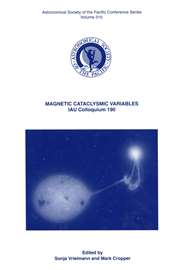Article contents
Influence of Adopted Nutation Model on VLBI NEOS-Intensives Analysis
Published online by Cambridge University Press: 12 April 2016
Extract
Very Long Baseline Interferometry (VLBI) provides information about the Earth’s rotation. Various observational programs have operated for different specific purposes since 1983. The purpose of the NEOS-Intensive program is to make observations of Universal Time (UT1–UTC). Short observational sessions (1-2 hours) include only the transcontinental baseline (Wettzell - NRAO20). 20–30 individual scans are performed during the observational time. Only five parameters, wet delay for the reference station, wet delay for the second station, clock offset for the second station, clock rate for the second station, and UT1–UTC are considered in the parametric model.
The purpose of this paper is to investigate the influence of the adopted nutation model on the UT1–UTC estimates. VLBI data from the NEOS-Intensives have been analyzed using the OCCAM 3.4 software. All reduction calculations are in accordance with the IERS Conventions 1996 (McCarthy, 1996).
- Type
- Section 2. Improved Definitions and Models
- Information
- International Astronomical Union Colloquium , Volume 180: Towards Models and Constants for Sub-Microarcsecond Astrometry , March 2000 , pp. 259 - 262
- Copyright
- Copyright © US Naval Observatory 2000
References
- 4
- Cited by


